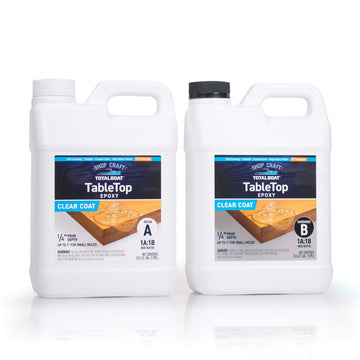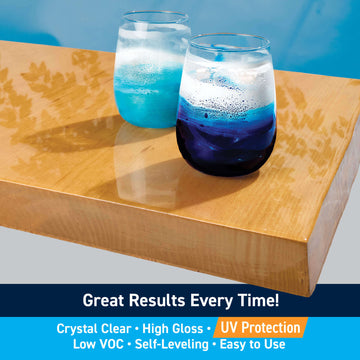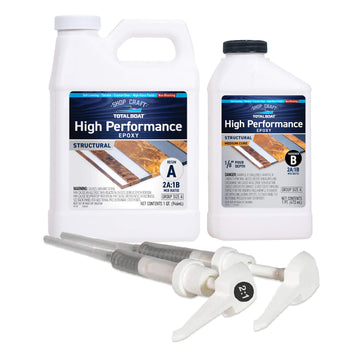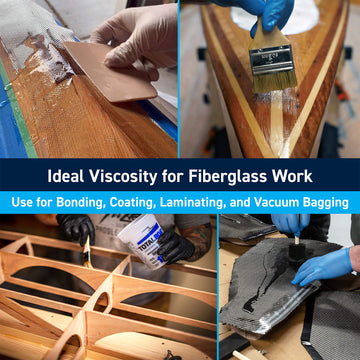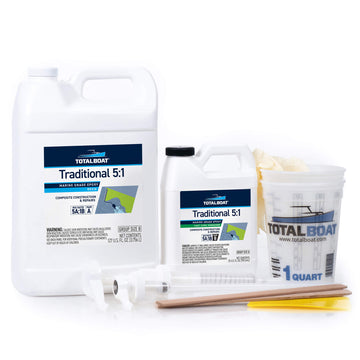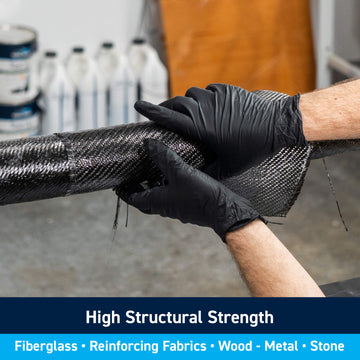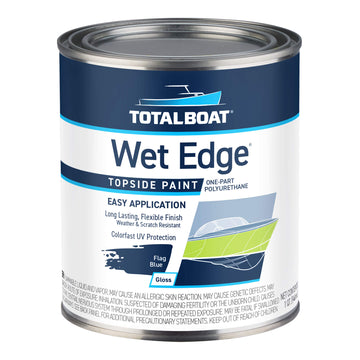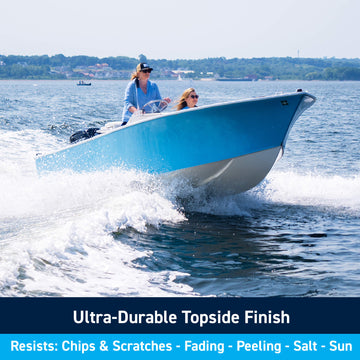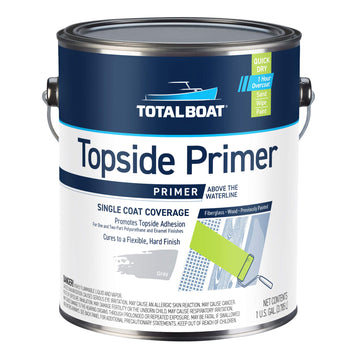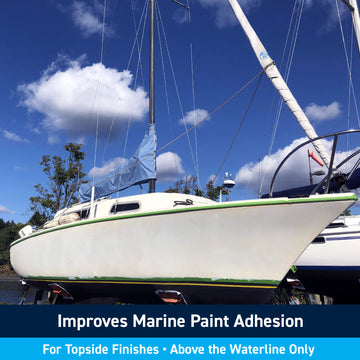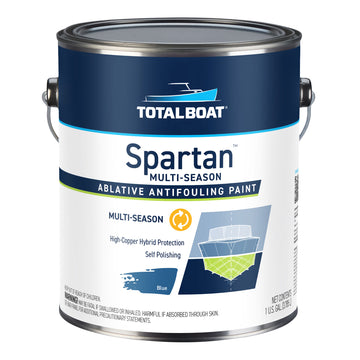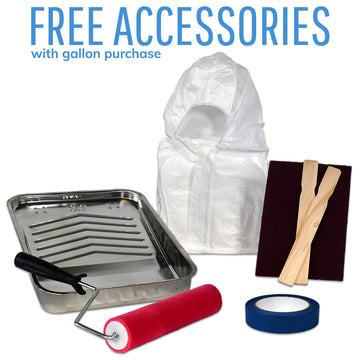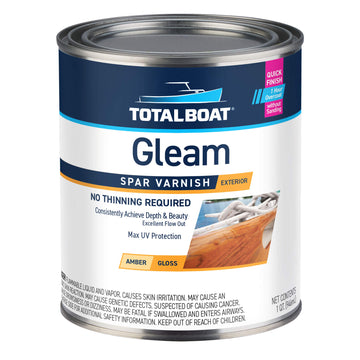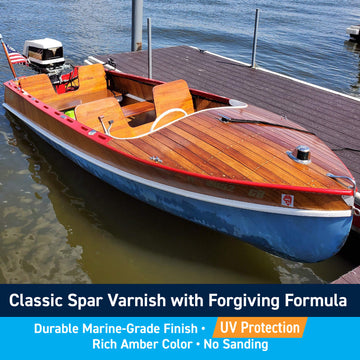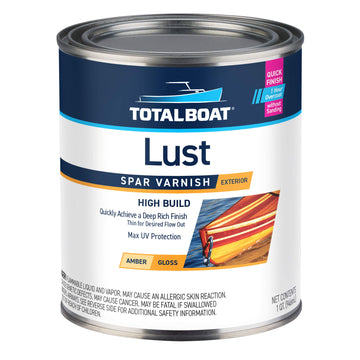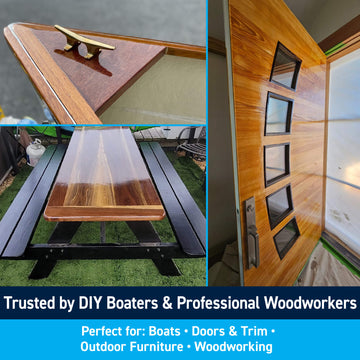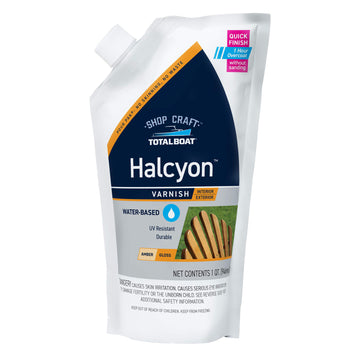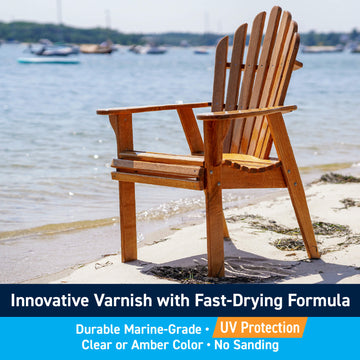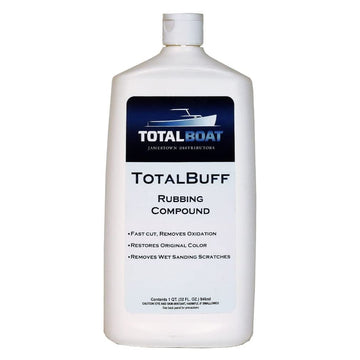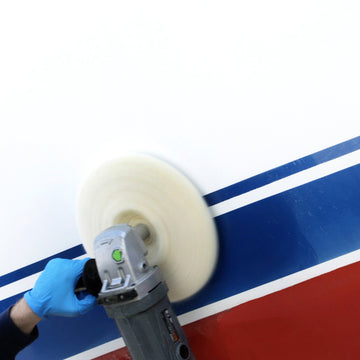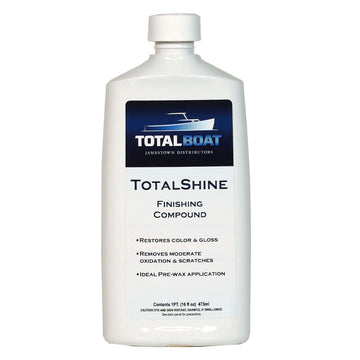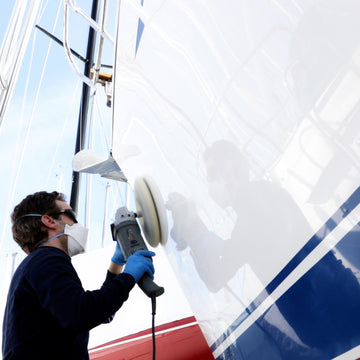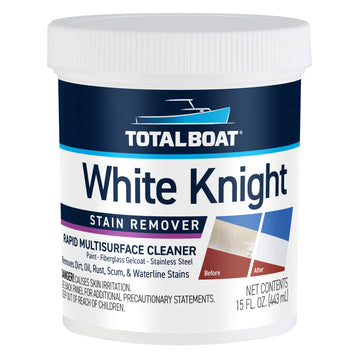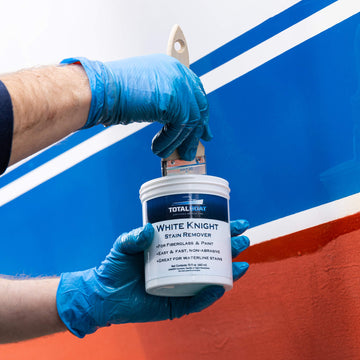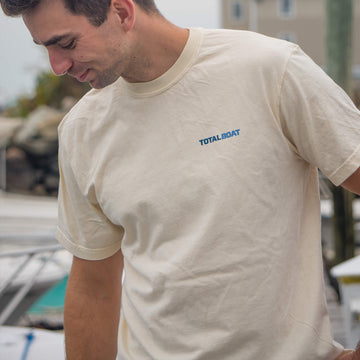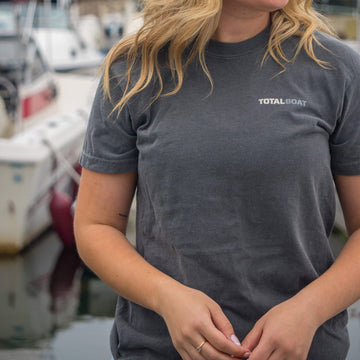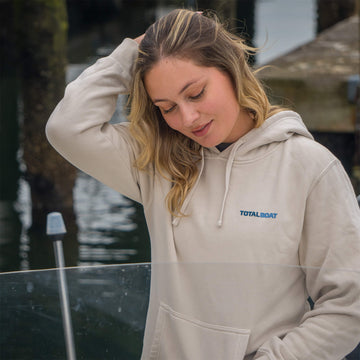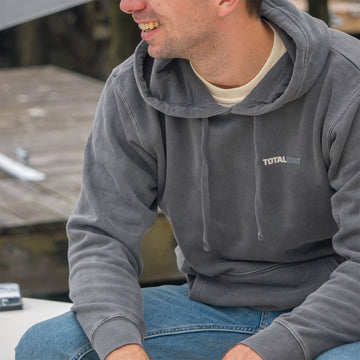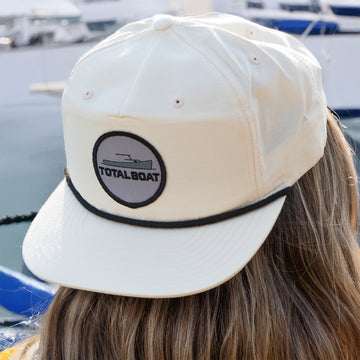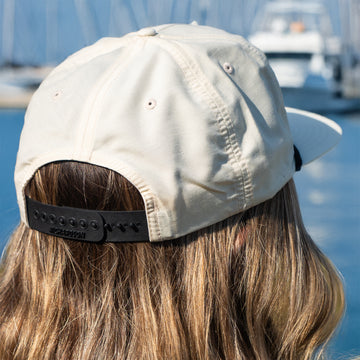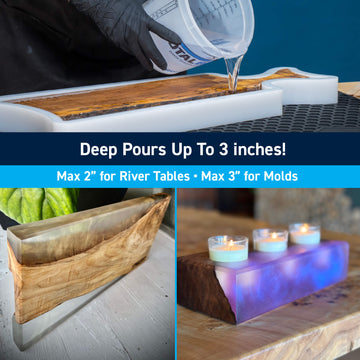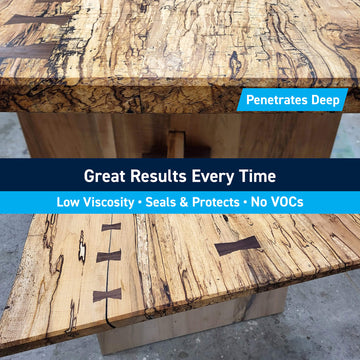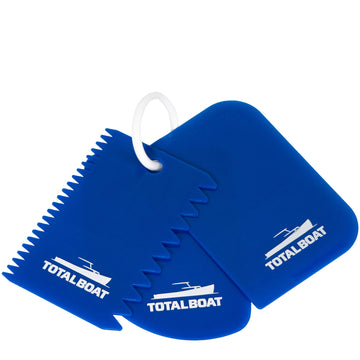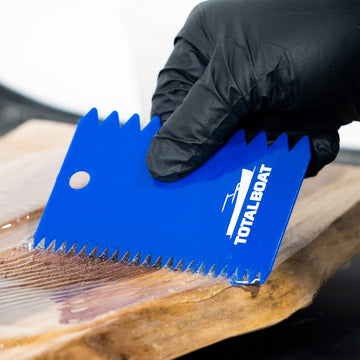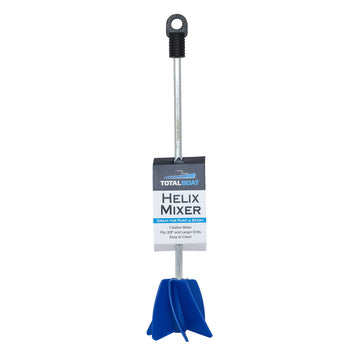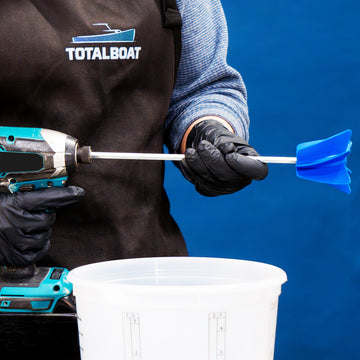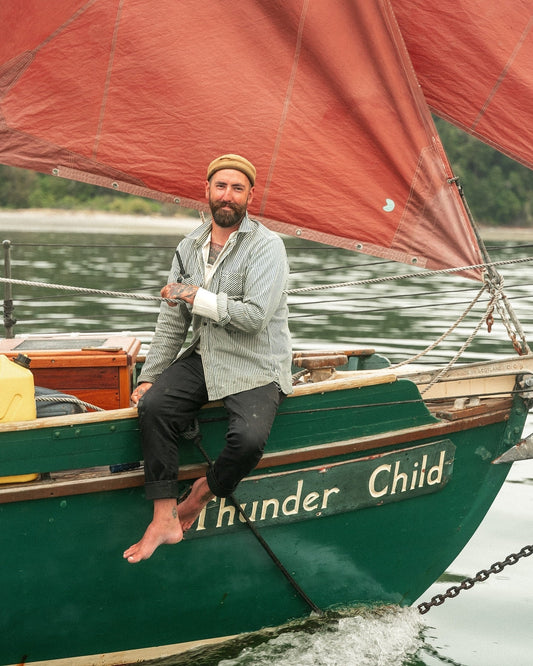When your YouTube channel comes with a disclaimer that says “my methods are not necessarily advisable,” you know you’re in for a good time. Meet David Adamsen, a woodturner based in Maine whose projects often toe the line between inspired craftsmanship and mild chaos, in the best way possible.
After escaping the soul-sucking monotony of a 9-to-5 desk job, David dove headfirst into the wonderfully weird world of woodturning, fueled by thousands of hours watching other makers on YouTube. These days, he’s one of them, albeit with his own eccentric twist. Whether he’s transforming a root ball into a sculptural masterpiece or casually embedding radioactive metals, David’s work is a mix of technical skill and creative risk-taking that which makes turning giant, gnarly chunks of wood incredibly fascinating to watch.
But don’t let the self-deprecating jokes fool you, David is a serious artist who chooses quality over algorithm-pleasing quantity, and who’s built a shop (and a loyal community) around curiosity, experimentation, and the occasional questionable decision.
We caught up with David to talk about his journey from YouTube viewer to full-time maker, the magic of Fathom, and why he can’t resist a burled cherry tree or a good pigment swirl.

Let’s start at the beginning. What inspired you to try woodturning for the first time on Christmas Day in 2018?
Before I started woodturning, I was working a 9-5 office job that was very unfulfilling. I would get home every day and surf YouTube for hours. Somehow, the algorithm recommended several woodturning channels to me, and I was hooked immediately. I watched probably thousands of hours of woodturning videos over the course of several months and learned a ton, but as you can imagine, that sedentary lifestyle was not healthy. So, I resolved to get on my feet and become a producer rather than a consumer by trying my hand at the lathe in real life. In my dad's shop was an old Jet 1236 that was mostly unused since my childhood, and when he gifted me a woodturning chuck on Christmas Day 2018, I turned my first bowl. It was a rough start, but I stuck with it and gradually purchased more advanced turning tools as I could afford them. I set and achieved my goal of creating an inventory of sellable woodturned pieces and opening an online store by the following summer, and I published my first YouTube video in August of 2019. There are so many talented and inspiring makers on YouTube, and though I have a lot to learn, I am incredibly fortunate to count myself as one of their peers.
Since going full-time with your YouTube channel in 2022, how has your approach to woodturning or content creation changed?
I'd like to think that my approach to woodturning and content creation is constantly changing, or at the very least, that I am constantly trying to improve both my woodturning and my videography skills. However, I made a decision long before going full-time as a content creator that I would always put quality above quantity, even at the expense of consistency. I suspect this approach is actually not the secret sauce for success as a content creator, but ultimately, I consider myself an artist first and a content creator second. So, I don't pretend to have this YouTube thing figured out (yet), but I am always trying to improve my processes to achieve... someday... maybe... both quality and consistency.
You’ve carved out a unique niche by blending humor, craftsmanship, and risk-taking. What’s your mindset when tackling a piece that’s a little out of the ordinary?
It's simple. If I'm not taking risks, I'm not having fun. In many ways, my goal is always to challenge myself with new techniques or experiments. To a certain extent, I struggle with doing the same thing over and over, which is why I have so much respect for the professional woodturners who can produce hundreds of identical pieces with machine-like precision and extreme efficiency. My mindset is somewhat more eccentric, where I prefer to let the subject (usually a wonky or ridiculous chunk of wood) determine the results rather than forcing the subject to conform to a specific theme. The purpose of this approach is to allow the subject to be all that it was meant to be. It is also the reason why so many of my projects take a protracted amount of time to complete.
Your recent bismuth project was both beautiful and a little radioactive. Can you tell us more about what sparked the idea and how the piece came together?
I was asking AI for examples of interesting nontoxic metals with specific attributes, and it recommended bismuth. It wasn't until searching for bismuth for sale that I discovered bismuth crystals, which opened up a whole new level of ideas that I hadn't considered. So, I pivoted from my original idea to focus on what could be done with bismuth crystals. My brother had been hounding me to make a lamp ever since I started woodturning, so I figured this was the perfect opportunity to combine bismuth, resin, wood, and some sort of lighting effect. The full video shows my whole process, but what it doesn't show is the amount of long gaps of downtime spent just thinking about how to make each step happen to avoid a catastrophe down the road. There are aspects of this piece that could have certainly been improved, and it is a concept I absolutely want to revisit sometime in the future. But at this point, judging by the lackluster performance of the video, I will pivot back to my original idea, which will require a lot more preparation and logistics.






What do you look for when combining materials—wood, resin, metal, etc., especially in terms of visual contrast and turning performance?
I often start with a subject material, like a gnarly root ball or wood burl, and my goal is to let that subject dictate the course of the project while also hopefully staying within the boundaries of a visually pleasing form. I often begin a project planning (and sometimes even hoping) to restrict myself to that one material, but as the project progresses, I am forced to use an additional material (often resin) to preserve or accentuate the natural aspects of the subject material that would otherwise be lost without it.
Quite often, the gnarly woods I choose are so far gone, either because of decay, cracks, or voids, that there is no way to even mount the piece on the lathe without first using resin to stabilize and fill the voids. When I am in a creative flow state, my shelves of pigments and dyes often present a temptation too great to resist, but in general, I try to use darker, moodier earth tones to complement the natural colors of the wood. My favorite is probably black, because it acts like a shadow against lighter colored woods, effectively highlighting them, but quite often, my amazing clients have a hankering for brighter "fun" colors.
Below: Hybrid Black Walnut & Epoxy Resin Hollowform
Watch: Woodturning: The Walnut Crotch!

Maine has a strong maker culture and stunning natural resources. How does your location influence the types of wood you work with or your creative direction?
I am so grateful and blessed to be a part of the maker community in Maine. There are so many natural resources, and one of my favorites is cherry burl. While I would prefer not to cut a living green cherry tree, there appears to be (at least in some places in Maine) an overabundance of standing dead cherry trees, many of which are laden with burls. Standing dead cherry trees are therefore my favorite find in the wild woods of Maine, and they are one of many motivators to networking with local landowners. However, I have a severe weakness for scouring the internet for exotic woods and rare wood species, so I in no way restrict myself simply to use only local materials.
How has the woodworking community on YouTube and Patreon shaped your journey, not just as a creator, but as a craftsman?
I have big plans for my Patreon community, which is just getting started, but the maker and woodworking communities on YouTube are comprised of literally thousands of, in my opinion, the most collaborative and supportive people on the platform. At times, it is tempting to be overwhelmed by the sheer amount of competition in the genre, and I am constantly reminding myself that focusing on views and subscriber counts is a futile recipe for stress and distraction. As an artist, I find it much more rewarding to focus on the creative process rather than on finding the recipe for achieving the most clicks.
Below: The Contaminated Cactus - (Cholla Cactus & Glow Pigments)
Watch: Woodturning: The Contaminate Cactus!




You’ve mentioned that TotalBoat products make what you do possible. Are there specific products that have become go-to staples in your shop?
I love so many of TotalBoat's products, but the one that keeps surprising me is Fathom. It is so versatile and user-friendly. I don't necessarily advise imitating my flagrant disregard for the manufacturer's recommendations, but I've had amazing success pouring large castings up to 15 inches deep with no thermal cracking. I've also noticed superior pigment swirls, too! The Penetrating Epoxy has also become my go-to for any surface stabilization that might be needed during the turning process, and it is always my first step in getting flawless waterproof finishes.
What advice would you give to someone who’s curious about woodturning but hasn’t made the leap yet, especially if they’re intimidated by the tools or safety concerns?
Don't be afraid of failure. If you're thinking about getting into woodturning, you've chosen what is, in my view, one of the best beginner-friendly woodworking disciplines. I started small with a very limited number of tools and a very limited budget. I didn't have any hands-on experience alongside a professional, but I was willing to learn by trial and error at my own pace by watching YouTube videos and by gradually getting more adventurous with techniques and projects. But don't be afraid to network with your local maker community. You might be surprised to find that there are local professionals or local woodturning clubs near you with artisans who are willing to guide you through the process. This is also a great way to find deals on woodturning equipment, and it is the best way to test tools and machines before purchasing.
Finally, what’s one upcoming idea or material you’re dying to experiment with—but haven’t quite figured out how to pull off yet?
You'll have to follow me on Patreon to find out!
Support David and shop TotalBoat via his affiliate link here!
